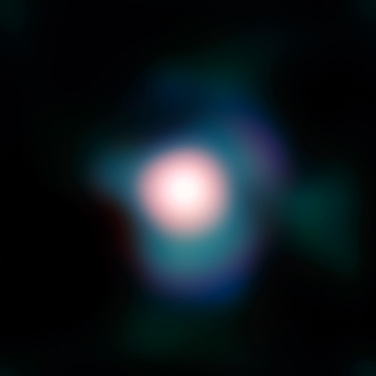Don't let Betelgeuse's ranking as the tenth-brightest star in the sky fool you. Its distance—430 light-years—hides the true scale of this supergiant. With a whopping luminosity of 55,000 suns, Betelgeuse still shines bright in our skies at a magnitude of 0.5.
Betelgeuse (pronounced "beetle juice" by most astronomers) derives its name from an Arabic phrase meaning "the armpit of the central one."
The star marks the eastern shoulder of mighty Orion, the Hunter. Another name for Betelgeuse is Alpha Orionis, indicating that it's the brightest star in the winter constellation of Orion. But Rigel (Beta Orionis) is actually brighter. This misclassification probably happened because Betelgeuse is a variable star (a star that changes brightness over time) and it might have been brighter than Rigel when Johannes Bayer originally categorized it.
Betelgeuse is an M1 red supergiant, 650 times the diameter and about 15 times the mass of the Sun. If Betelgeuse were to replace the Sun, all the planets out to the orbit of Mars would be engulfed!
Observe Betelgeuse and you are witnessing a star approaching the end of its long life. Its huge mass suggests that it might fuse elements all the way to iron. If so, it will blow up as a supernova that would be as bright as a crescent moon, as seen from Earth. A dense neutron star would be left behind. The other possibility is that it might evolve into a rare neon-oxygen dwarf.
Betelgeuse was the first star to have its surface directly imaged, a feat accomplished in 1996 with the Hubble Space Telescope.
Perhaps a much more advanced orbiting telescope will be watching someday when Betelgeuse goes supernova, an event which will certainly make it the brightest star in Earth's skies—if only for a few months.
